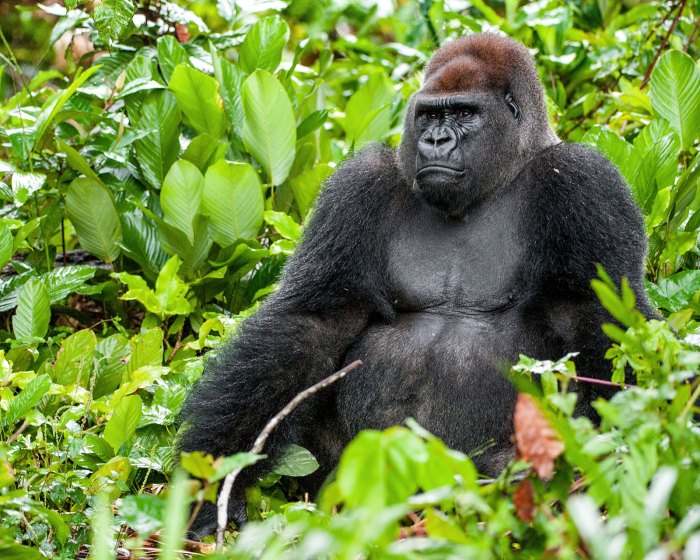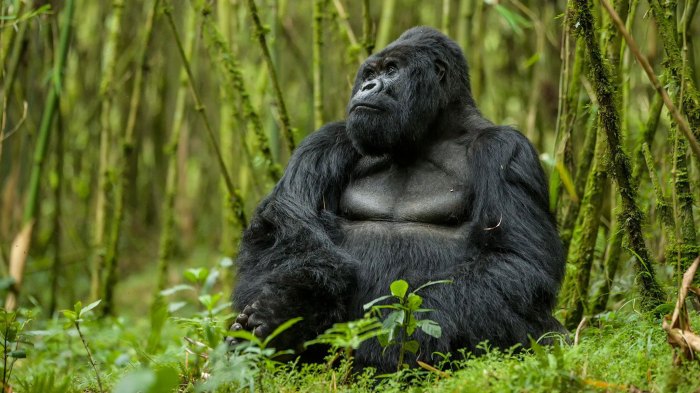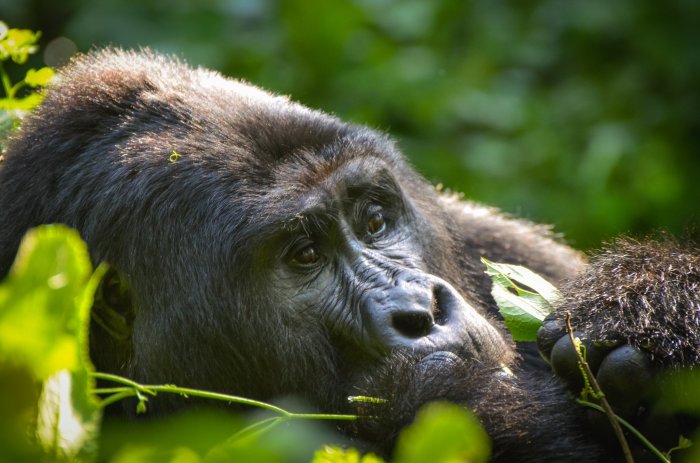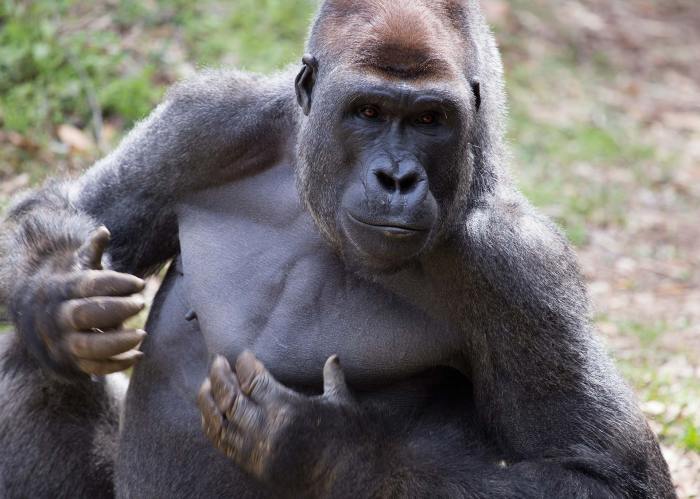Gorillas adaptations in the tropical rainforest is a fascinating topic that delves into the remarkable strategies these primates have developed to thrive in this challenging environment. From physical adaptations that enhance their mobility and protection to behavioral adaptations that promote social cohesion and effective communication, gorillas have evolved a unique set of traits that enable them to flourish in the rainforest ecosystem.
This article explores the diverse adaptations of gorillas in the tropical rainforest, examining their physical characteristics, behavioral patterns, dietary habits, habitat preferences, and interactions with other species. By understanding these adaptations, we gain a deeper appreciation for the resilience and adaptability of these magnificent creatures.
Introduction

Gorillas are large, terrestrial primates that inhabit the tropical rainforests of central and western Africa. These forests present unique challenges, including dense vegetation, high humidity, and limited food availability. To survive and thrive in this environment, gorillas have evolved remarkable adaptations that enhance their survival.
Gorillas face challenges such as navigating dense undergrowth, finding and consuming suitable food, and defending themselves from predators. Their adaptations enable them to overcome these challenges, contributing to their success as a species in the rainforest ecosystem.
Physical Adaptations
Gorillas possess several physical adaptations that aid their survival in the rainforest. These include:
- Large body size:Gorillas are among the largest primates, with males weighing up to 200 kg. Their size provides strength for locomotion, protection against predators, and access to high-quality food sources.
- Powerful limbs:Gorillas have long, muscular arms and legs that allow them to navigate dense vegetation and climb trees with ease. Their strong grip and grasping abilities facilitate arboreal movement and feeding.
- Thick fur:Gorillas are covered in thick, coarse fur that provides insulation against rain and cold temperatures. The dark coloration of their fur also provides camouflage in the shadowy rainforest environment.
Behavioral Adaptations
In addition to physical adaptations, gorillas exhibit behavioral adaptations that enhance their survival in the rainforest. These include:
- Social behavior:Gorillas live in stable social groups, typically led by a dominant male. This social structure provides protection, cooperation in feeding and nesting, and facilitates the rearing of young.
- Communication:Gorillas communicate through a variety of vocalizations, gestures, and facial expressions. These signals allow them to coordinate group activities, establish dominance, and maintain social cohesion.
- Feeding habits:Gorillas are primarily herbivores, consuming a wide variety of fruits, leaves, and stems. Their ability to adapt to different food sources and exploit various parts of the rainforest contributes to their dietary success.
Dietary Adaptations
Gorillas have evolved specialized dietary adaptations that enable them to thrive in the rainforest’s limited food resources. These adaptations include:
- Frugivory:Gorillas consume a significant amount of fruit, which is rich in energy and nutrients. Their large size and strength allow them to access fruits high in the canopy, where other species cannot reach.
- Folivory:Gorillas also consume leaves, which are less nutritious than fruits but more readily available. Their specialized digestive system allows them to break down tough plant material and extract nutrients efficiently.
- Seasonal feeding:Gorillas adjust their diet based on the availability of different food sources throughout the year. During the rainy season, they consume more fruits, while during the dry season, they rely more on leaves and stems.
Habitat Adaptations
Gorillas utilize different parts of the rainforest for shelter, nesting, and foraging. These habitat adaptations include:
- Nesting sites:Gorillas build nests in trees for sleeping and protection. These nests are typically made of branches and leaves and provide a comfortable and safe environment for the group.
- Foraging areas:Gorillas spend most of their time foraging for food in the rainforest. They utilize different areas depending on the availability of specific food sources and the time of day.
- Water sources:Gorillas require access to water for drinking and bathing. They often establish territories near rivers, streams, or other water sources.
Interactions with Other Species, Gorillas adaptations in the tropical rainforest
Gorillas interact with a variety of other species in the rainforest, including predators, competitors, and mutualists. These interactions shape their behavior and survival:
- Predators:Gorillas have few natural predators due to their large size and strength. However, they may be vulnerable to leopards and crocodiles in certain areas.
- Competitors:Gorillas compete with other primates, such as chimpanzees, for food and resources. These interactions can lead to territorial disputes and aggression.
- Mutualists:Gorillas form mutualistic relationships with certain bird species, such as honeyguides. Honeyguides lead gorillas to beehives, and the gorillas share the honey with the birds.
Detailed FAQs: Gorillas Adaptations In The Tropical Rainforest
What are some of the unique physical adaptations of gorillas that aid their survival in the rainforest?
Gorillas possess several physical adaptations that enhance their mobility, feeding, and protection in the rainforest. These include strong and muscular bodies for climbing and foraging, long arms for reaching fruits and leaves, and thick fur for insulation and protection from the elements.
How do gorillas’ social behavior and communication contribute to their success in the rainforest?
Gorillas live in complex social groups with well-defined hierarchies. They communicate through a variety of vocalizations, gestures, and facial expressions. These social bonds and effective communication allow gorillas to coordinate their activities, maintain group cohesion, and respond to threats.
What are the key dietary adaptations of gorillas in the rainforest, and how do they obtain their food?
Gorillas are primarily herbivorous, with a diet consisting mainly of fruits, leaves, and stems. They have specialized digestive systems that allow them to extract nutrients from tough plant material. Gorillas also exhibit opportunistic feeding behavior, consuming insects, small mammals, and birds when available.


